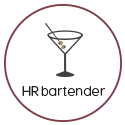LinkedIn is getting a lot of press these days. And I’m not sure it’s for the right reasons. LinkedIn is a great place to share your professional accomplishments. It’s a good place to be seen by recruiters. But sadly, I’ve seen two recent articles that caution LinkedIn users – one dealing with references and the other regarding photos.
Until now, I’ve never thought twice about either of these matters. I mean, why wouldn’t you put your photo on LinkedIn? It helps you connect with people. And, references…well, you shouldn’t put stuff out there that isn’t true. So I assume any recommendation you write is the truth. And, the truth can’t get you into trouble. Right?
But maybe I need to change my story…so to give me the real deal on this, I reached out to one of my favorite labor lawyer Tweeps, Eric B. Meyer, and asked him a couple of LinkedIn questions:
Question #1 deals with the neutral reference. Here’s the scenario: my company has a neutral reference policy, meaning we only release name-title-dates of employment. That’s it. Meanwhile, employees all over the company have LinkedIn accounts…which of course, list my company as the current employer.
My co-worker (let’s call him Bob) and I give each other recommendations on LinkedIn. Bob’s a nice guy and I always enjoy working with him. Then Bob gets himself fired. Can I get into trouble for writing him a reference on LinkedIn?
ERIC: It depends [ed. – I TOLD you he was a lawyer – HA!]. Although it may differ some in form, in substance, a LinkedIn recommendation can be very similar to a classic written recommendation.
There may be some benefit to an employer — in terms of exposure and marketability — to have its current employees receiving positive recommendations on LinkedIn.
There are also reasons why employers prefer neutral references.
For example, a positive reference could come back to bite an employer if the recommended employee is terminated and he/she later sues for discrimination. That is, while the employer may contend that it was perfectly justified in terminating the employee, the employee may use the LinkedIn recommendation as evidence that the employer’s reason for termination was mere “pretext” for some discriminatory motive in ending the employment relationship.
Under the “Bob scenario,” describing Bob as a nice guy — while a positive reference — doesn’t necessarily suggest that Bob is a good employee. On the other hand, we enter a gray area with a LinkedIn recommendation that describes Bob as someone with whom you enjoy working. Certainly, a LinkedIn recommendation listing Bob’s work achievements and otherwise praising his performance as an employee of the company would run afoul of the neutral reference policy.
As a best practice, before giving Bob any kind of written recommendation, you should ascertain whether your company has a neutral reference policy. Then do a “belt and suspenders.” Discuss with a manager and/or Human Resources, your specific proposed LinkedIn recommendation for Bob. Get the ok from your employer first. Then give the LinkedIn recommendation.
Question #2 addresses photos versus icons: I’ve been reading a lot about how I should replace my photo with some sort of icon so recruiters don’t know what I look like. The point being…if you don’t know what I look like then you can’t discriminate against me.
Isn’t this a bit “over the top”? Recruiters will eventually see what you look like, right? What’s your take?
ERIC: This seems excessive. In order to prove discrimination, a victim must establish that he/she was discriminated against on the basis of his/her protected status (e.g., race, gender, religion, national origin, etc.).
If a recruiter does not obtain demographic information directly from the potential hire, it is still possible that the recruiter will eventually “stumble upon” this information and see what you look like. That is, a recruiter is likely to Google you, and then check you out on social networking sites such as Facebook, Twitter, LinkedIn, and MySpace.
In these cases, the potential hire may have a difficult time establishing discrimination. Not only would the potential hire have to show that a decision not to hire was made based on demographic information, but also that the recruiter, in fact, obtained this information.
So rather than worry about a potential discrimination action, where appropriate, take advantage of the opportunity to include a quality photograph to set yourself apart from the competition.
Well, there you go folks!
Let me add that companies might want to start including information about LinkedIn recommendations in their general communication about company references. Why wait for someone to come and ask? Be proactive.
And, I think Eric’s point about avatars is spot on. A good photo can really set you apart. So take a objective look at yours and ask yourself…would I connect with me?
Thanks Eric for your sage advice (as usual!) I owe you one…
0







Pete Radloff says
I’ve always seen the recommendations on LI as more of the “atta boy” types, rather than a full fledged recommendation. I would suspect that most people have a small group of peers, bosses, etc. that they would save for a more detailed recommendation, circling around, work ethic, performance, viability, and the like.
I think if people see potential backlash around the recommendations on LI, that we’ll see a dramatic reduction in the willingness to give recommendations on that site, no?
hr bartender says
Pete – I can definitely see your point. I’ve seen plenty of recommendations that are nothing more than generic ‘seals of approval’ on LinkedIn. I wonder though if those are the ones we should be most cautious of. How many people make assumptions based upon a generic recommendation?
Pete Radloff says
Well, all we can say there is…….you know what they say about assuming, right? 🙂